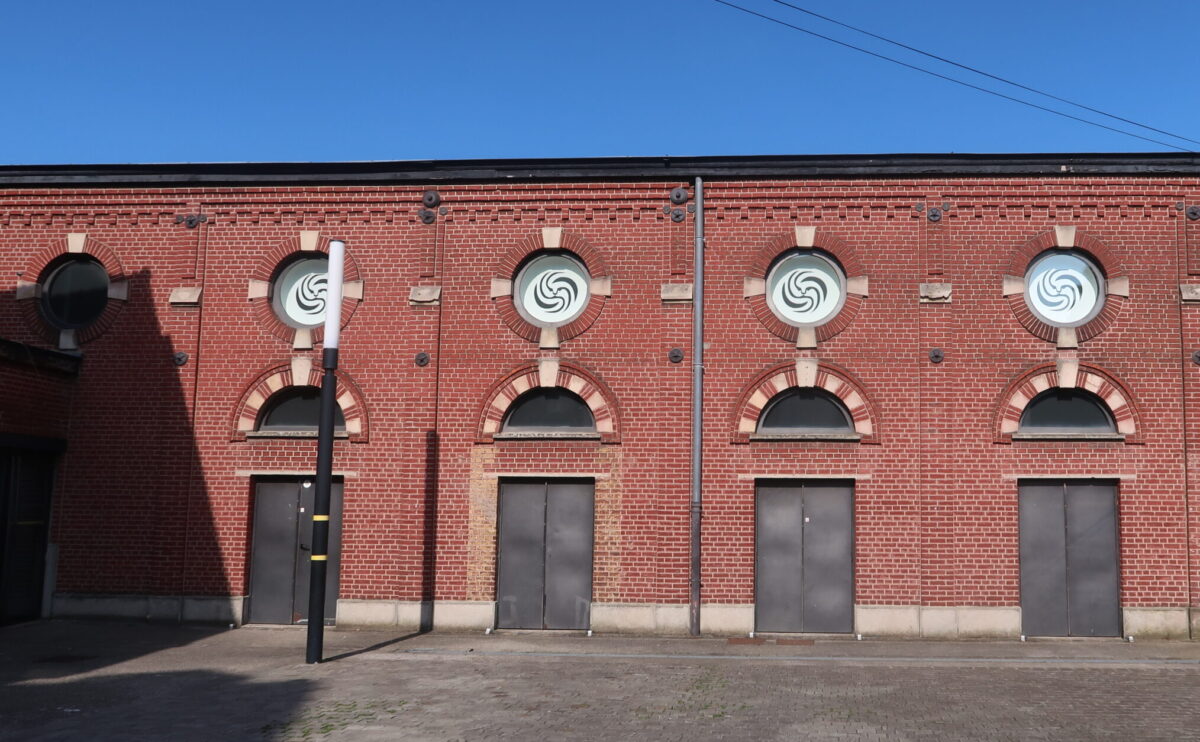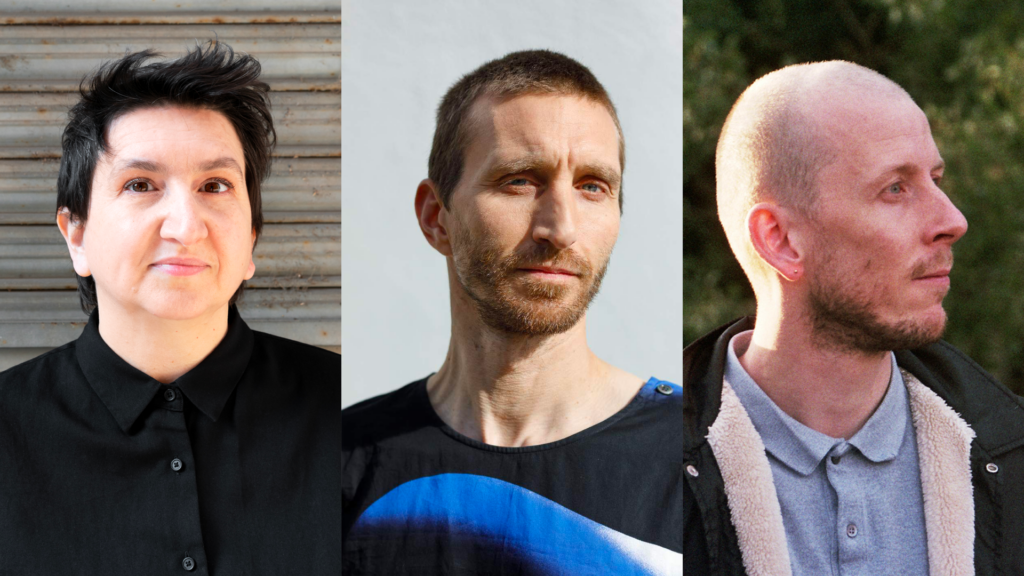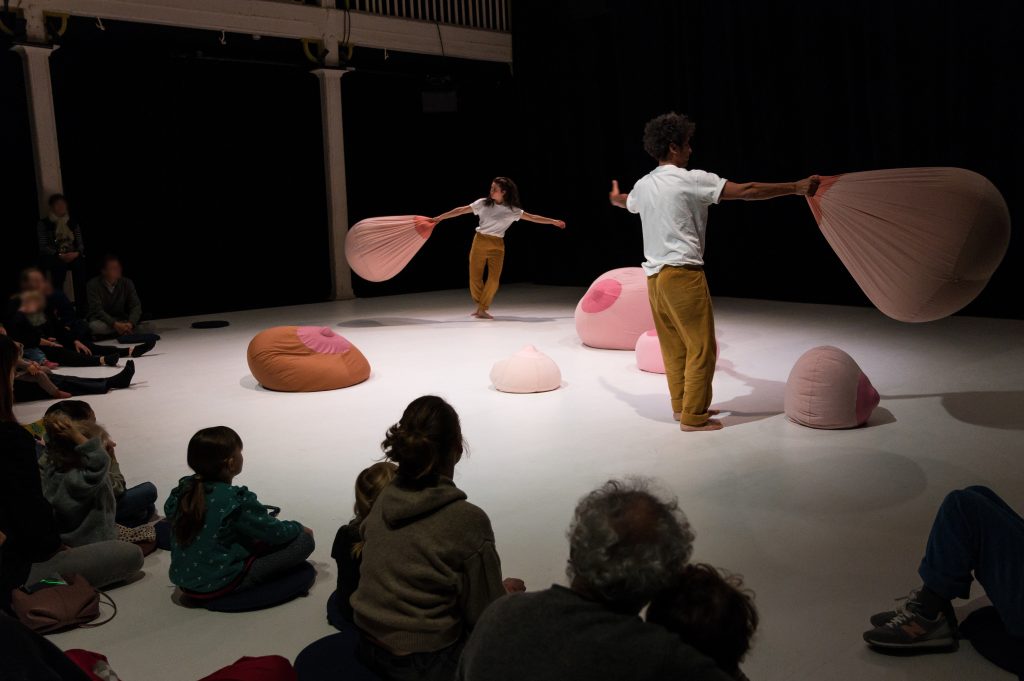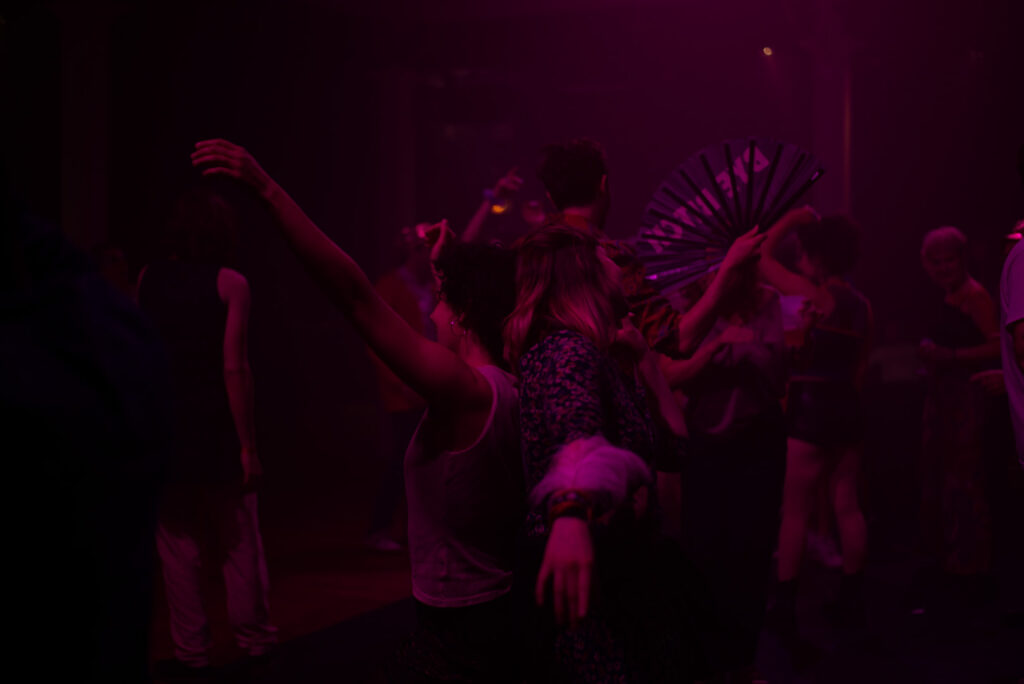
For forty years, Le Gymnase CDCN has been supporting and creating a network within the dance sector in and around Lille, as well as regionally, nationally and internationally.
At the heart of its activity is its support for artists and audiences.
Le Gymnase is one of fifteen National Centres of Choreographic Development (CDCN) in France. As a CDCN, Le Gymnase’s guiding principles are based on:
· supporting artists;
· working to raise awareness and mediation;
· professional training;
· research;
· dissemination of dance and regional outreach.
On average, Le Gymnase welcomes thirty companies in residency and/or co-production every year (at Le Gymnase or in its nearby studio).
Every year, around 120 events are staged for the public, interspersed with regular outputs from residencies (for example, open studios) and shows with our programming partners such as the NEXT festival or URBX. Le Gymnase also has two major events in its programme :

Le Gymnase also joins forces with an artist for a period of four years – Jan Martens from 2016 to 2019, Sylvain Huc from 2020 to 2023 and, currently, Silvia Gribaudi since 2024 – working on co-productions, dissemination, masterclasses and participatory projects with the associate artist and boosting their artistic presence in its area.
One particular historical and organic focus for Le Gymnase is its involvement in mediation working with the sectors of education, social work and health, using different tools and educational packs.

Another example of this is the LOOP network that Le Gymnase runs, a professional dance network designed for children and young people that currently comprises 24 organisations. This network is involved in sharing resources and developing educational tools, and is also a space of artistic exchanges. Through the LOOP network, Le Gymnase commissions artists for shows for young audiences such as Au Pied de la Lettre and TWICE, and more recently one for very young audiences with Les Mouvements Minuscules (Marion Muzac’s Le petit B, Amala Dianor’s Coquilles). Le Gymnase is associate producer of each of these creations.

With a new director at the helm and our plans for the future being drawn, an increasingly international outlook for Le Gymnase CDCN is taking shape. This will be translated into each of our activities, such :
· expanding the LOOP network to festivals and initiatives intended for children and young people on a European scale
· Being more involved in producing and disseminating the work of international artists.
· Establishing a career path for artists with our European partners, such as our experiments with artistic support that allow young choreographers to spend time immersed with our European partners to become acquainted with dramaturgical approaches, transdisciplinarity, collective writing and audience participation.
Becoming more international also crosses over into our mediation projects through our involvement in international cooperation projects such as Dance Well, which unites eight European partners to work on long-term activities from August 2022 to July 2025.
Le Gymnase CDCN is about continuous action with artists and with people.
Infinite attention on dance every day.

1983: Foundation of Danse à Lille by Catherine Dunoyer de Segonzac and Eliane Dheygère. It is initially a a biennial contemporary dance festival in European Metropolis of Lille.
1988: The festival becomes annual and extends into a season-wide programming.
1990: The beginning of international collaborations via the organisation of platforms for pre-selection at the Bagnolet competiton. Creation of Bancs d’Essais Internationaux.
1993: Festival celebrating 10 years of the association. Eliane Dheygère leaves the organization.
1995: Creation of Repérages, an international meeting of young choreographers.
2003: Danse à Lille, become a CDC, celebrated its 20th anniversary. Danse à Lille becomes a Center for Choreographic Development (CDC) and celebrates its 20 years of existence. The organization arrives in September at le Gymnase in Roubaix which is enlisted in the “Inventaire Supplémentaire des Monuments Historiques”.
2005: Thomas Lebrun is the first associate artist of Danse à Lille / CDC for three cultural seasons.
2006: Danse à Lille/CDC inaugurates a renovated Gymnase and the place is entirely adapted for its new vocation : welcoming shows and residencies of contemporary dance. First edition of Les Petits Pas – a dance festival for young audiences.
2012: Catherine Dunoyer de Segonzac leaves the organization. Céline Bréant arrives at the direction of the CDC.
2013: Danse à Lille is renamed Le Gymnase | CDC. The season is henceforth organized around two key moments: Les Petits Pas and Le Grand Bain – immersion in the field of choreography.
2015: Production of Au pied de la lettre #1 (Anne Nguyen et Michel Schweizer).
2016: Jan Martens is chosen to be associate artist for four years. Managed by Le Gymnase, LOOP network is launched. Production of Au pied de la lettre #2 (Ambra Senatore et Loïc Touzé).
2017: The CDC label is officially nationally accredited. Le Gymnase | CDC becomes Le Gymnase CDCN.
2018: Production of Pauline Thomas (Jan Martens).
2019: Production of TWICE#1 (Emmanuel Eggermont et Robyn Orlin).
2020: Sylvain Huc takes over from Jan Martens as associate artist for four years. Production of TWICE#2 (Alexander Vantournhout et Aïcha M’Barek & Hafiz Dhaou).
2021: Opening of Gymnase’s studio.
2022: Céline Bréant leaves the organization. Laurent Meheust arrives at the direction of le Gymnase CDCN. Le Gymnase CDCN joins the European Dancehouse Network. The Petit Pas Festival becomes Forever Young / A dance festival that comes of age. Production of Le petit B (Marion Muzac) as part of Les mouvements minuscules program.
2023: Dance Well workshops are launched in the Gymnase.
2024: Silvia Gribaudi is the new associate artist. Production of Ad Libitum (Simon Le Borgne) and Coquilles (Amala Dianor).
